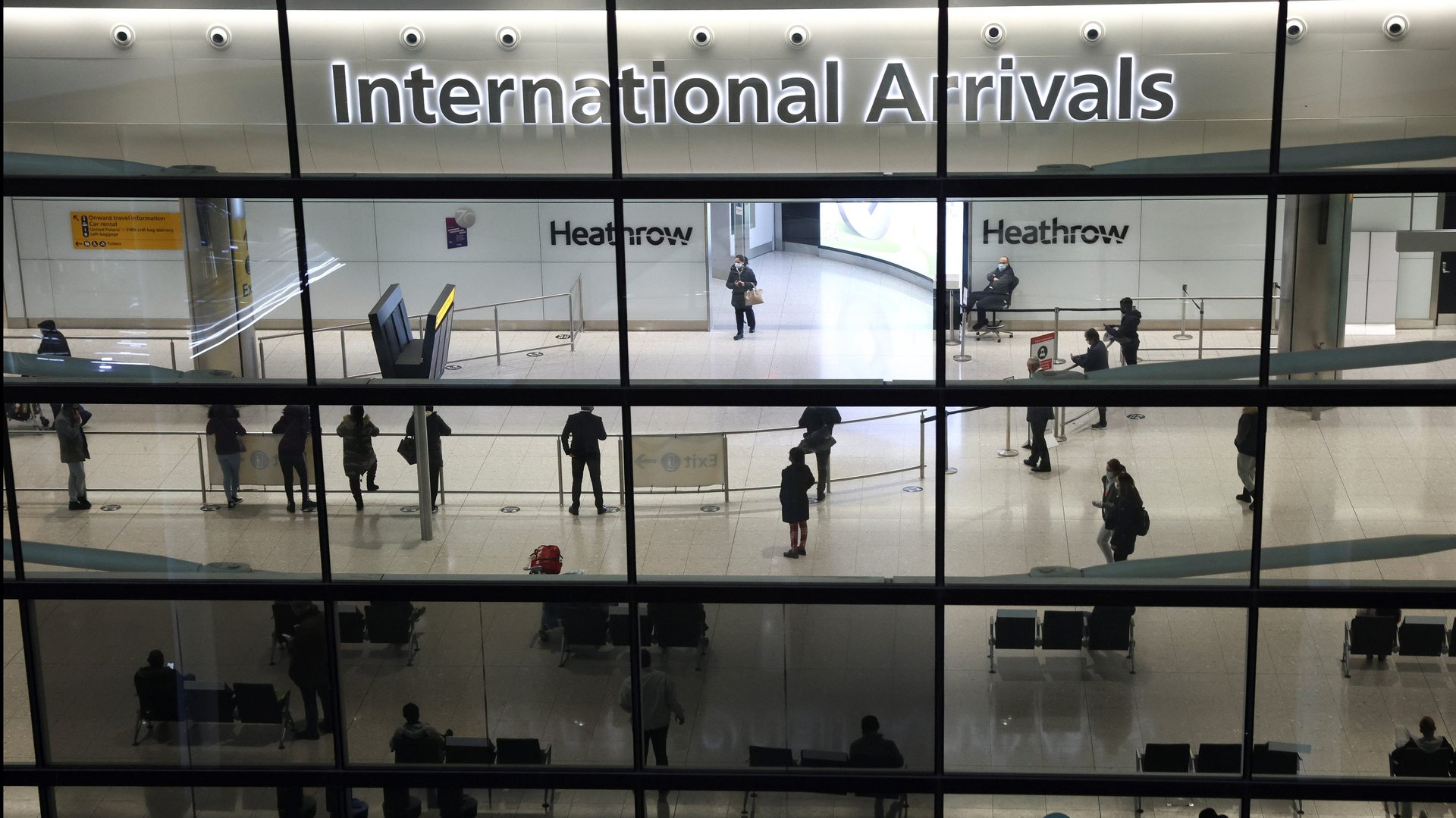London Heathrow Airport’s passenger levels haven’t been this low since the 1970s
London’s Heathrow, one of the busiest airports in the world, lost £2 billion ($2.83 billion) in 2020 as the aviation industry collapsed under the strain of the pandemic. Now, it’s calling for more support from the UK government in order to survive.


London’s Heathrow, one of the busiest airports in the world, lost £2 billion ($2.83 billion) in 2020 as the aviation industry collapsed under the strain of the pandemic. Now, it’s calling for more support from the UK government in order to survive.
John Holland-Kaye, Heathrow’s CEO, said passenger numbers have dropped to levels not seen since the 1970s. Only 677,356 people flew through Heathrow in January of this year, compared to almost 6.1 million in January of last year. In 2020 as a whole, only 22.1 million passengers flew through Heathrow—and more than half of those traveled in the first two months of the year, before borders closed across Europe as a result of Covid-19.
Heathrow reported a dip in overall revenue of 62% despite the fact that it ”cut gross operating costs by nearly £400 million, reduced capital expenditure by £700 million, and raised £2.5 billion in funding, including a £600 million capital injection,” according to the release.
Heathrow called on the UK government to provide more support as part of its 2021 Budget, set to be released on March 3. Specifically, it asked for relief from business rates and an extension of the furlough scheme to keep employees on the payroll. Holland-Kaye pointed to the Group of Seven (G7) meeting, which UK prime minister Boris Johnson will chair in June 2021, as an opportunity to “secure global agreement on a common international standard for travel.”
The release ended on an optimistic note: The UK government announced this week that international travel might resume after May 17, subject to review. And Heathrow said it had enough cash on hand to see it through 2023, although its net debt rose 5.8% compared to the previous year.
“We can be hopeful for 2021, with Britain on the cusp of becoming the first country in the world to safely resume international travel and trade at scale,” Holland-Kaye said. “Getting aviation moving again will save thousands of jobs and reinvigorate the economy.”